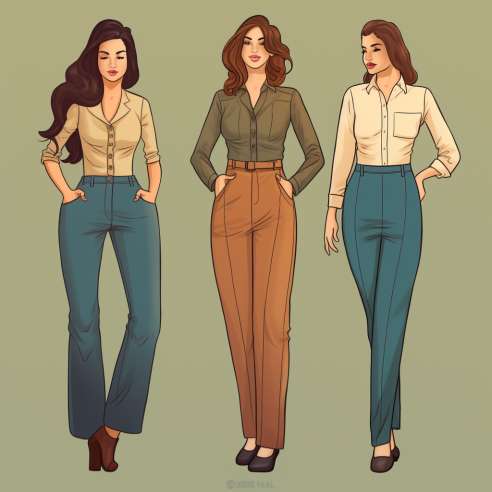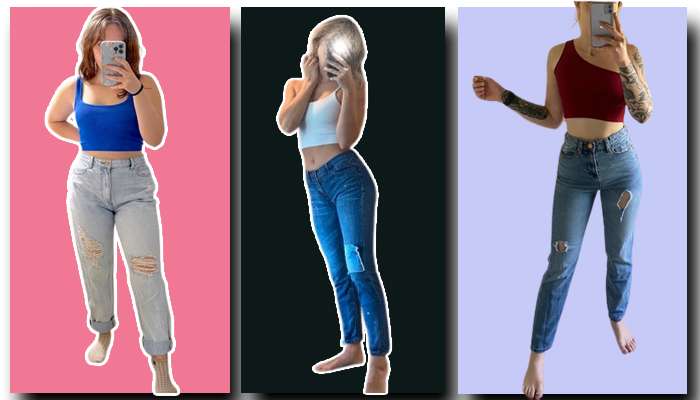A Fashion History of Women’s Pocketless Pants: Unearthing the Trends & Reasons
The fashion industry constantly evolves, reflecting societal, cultural, and technological changes. One interesting aspect that has seen a significant transformation over the years is the inclusion of pockets in clothing. Pockets, often considered a functional feature in garments, have been subject to gender bias in the world of fashion.
This article explores the historical context and various reasons behind the pockets gap in women’s clothing, delving into the reasons why women’s pants have lacked pockets and the impact of gender stereotypes on this disparity.
You might like our recent post- How To Wear Jeans To Work For Women?
Gender Bias in Fashion
Fashion has been shaped by societal norms and gender expectations. Men’s clothing has always had functional pockets, but women’s pants often lack practical elements, creating a “pockets gap” between functionality and style in women’s fashion.
Why Do Women’s Pants Not Have Pockets?

The lack of pockets in women’s pants has been a source of frustration and curiosity. Unlike men’s pants with roomy pockets, women often have small or no pockets at all. Let’s explore the reasons behind this ongoing phenomenon:
Also Read: Levi 505 Regular Fit vs Straight Fit
1. Fashion Trend:
Over time, the fashion industry has prioritized aesthetics and sleek silhouettes for women’s clothing. This emphasis on form-fitting designs often comes at the expense of functional elements like pockets.
2. Focus on Aesthetics:
Women’s fashion has historically been associated with elegance and femininity. Designers often prioritize creating clean lines and flattering shapes, and pockets can disrupt these aesthetics, leading to their exclusion.
3. Effort to Sell Accessories:

Some fashion houses intentionally exclude pockets from women’s pants to promote the sale of handbags and other accessories. This marketing strategy creates a reliance on additional fashion items to compensate for the lack of pocket space.
4. Cost-Cutting Measure:
Manufacturers might skip adding pockets to women’s pants to save on production costs, as pockets can require extra fabric and labor.
5. Market Expectation:
Women’s clothing, driven by consumer demand and market trends, has historically been designed with the assumption that women carry purses or bags, making pockets seem less necessary.
6. Gender Stereotypes:
Societal gender norms play a significant role in shaping fashion choices. The belief that women should be less burdened by practical matters perpetuates the exclusion of pockets in their clothing.
7. Fear of Bulkiness:

Designers may worry that functional pockets could add bulk to women’s pants, compromising the desired slim and sleek look.
8. Focus on Comfort:
Some argue that excluding pockets is an effort to prioritize comfort in women’s clothing. Pockets may cause discomfort if not thoughtfully designed, leading to their omission.
9. Emphasis on Accessories:
Fashion often revolves around accessories as a means of self-expression. By minimizing pocket space, designers encourage using accessories to complete an outfit.
10. Different Styling Priorities:

Women’s clothing has historically been designed with an emphasis on different styling priorities than men’s clothing. This has led to variations in pocket inclusion between genders.
Frequently Asked Questions (FAQs)
Did Women’s Pants Always Lack Pockets Historically?
While women’s clothing, including pants, had functional pockets in the past, their inclusion gradually declined over time, leading to the pockets gap we see today.
Are There Any Historical Instances Where Women’s Clothing Had Functional Pockets?
Yes, historical evidence shows that women’s clothing, including dresses and skirts, had functional pockets in various civilizations.
Are There Cultural Variations in Pocket Inclusion?
Yes, different cultures and regions have varied in their approach to pocket inclusion in women’s clothing, with some embracing functional pockets while others followed the trend of exclusion.
Conclusion
The lack of pockets in women’s pants is not merely a matter of design choice; it reflects deeper gender biases and societal expectations in the fashion industry. Over time, women’s fashion has seen significant shifts, and the pockets gap is a clear example of the ongoing struggle to balance functionality with aesthetics.
As the fashion world continues to evolve, it’s essential to challenge stereotypes and prioritize inclusivity, promoting a future where pockets in women’s clothing become the norm rather than the exception.






